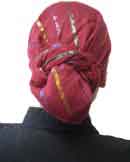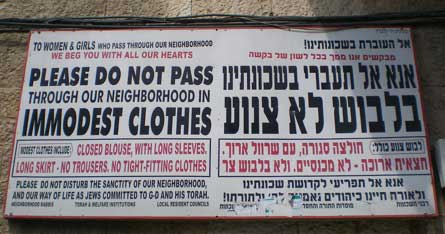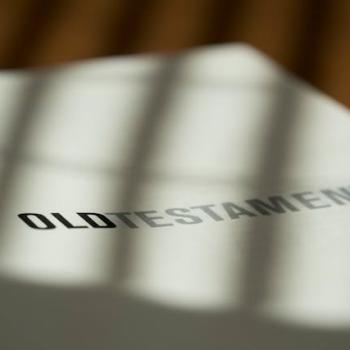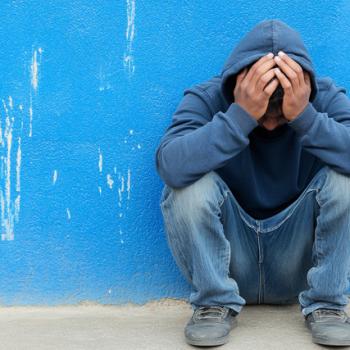 In other forms of Orthodoxy, women will cover their hair with a tichel (scarf), sheitel (wig), or snood. Some rabbis have ruled that wigs look so natural that one can't tell the difference between a wig made of real hair and a woman's true hair, so women must wear synthetic wigs or a scarf. Some sects say that a woman can wear a sheitel but must cover it with a hat or scarf. In Chabad Lubavitch, the Rebbe encouraged all married women to wear only sheitels in public (though many Chabad women wear scarves or snoods at home).
In other forms of Orthodoxy, women will cover their hair with a tichel (scarf), sheitel (wig), or snood. Some rabbis have ruled that wigs look so natural that one can't tell the difference between a wig made of real hair and a woman's true hair, so women must wear synthetic wigs or a scarf. Some sects say that a woman can wear a sheitel but must cover it with a hat or scarf. In Chabad Lubavitch, the Rebbe encouraged all married women to wear only sheitels in public (though many Chabad women wear scarves or snoods at home).
Wigs must be deemed kosher. Why? How could hair be kosher? Several years ago communities found that some of the hair used in sheitels was coming from Indian temples. According to halachica (law), Jews cannot gain from anything used in idolatry and therefore that hair was not kosher.
And under the wig? Since most rabbis want a wife to remain attractive to her husband, they do not usually recommend shaving the head. It isn't meant to punish women. However, every group has their own minhag! Some groups, especially in Jerusalem, require the women to shave their heads after getting married to ensure that not even the rafters will see the woman's hair. And some groups, like the Satmar, have women trim their hair short and worn under a wig. Many Orthodox women will trim their hair short on their own since it is easier to put under a wig than is long hair.
In line with modest actions to go along with modest dress, married women won't go to a public salon with big bay windows. Many salons are located in areas without windows so women can come, get a trim, have their wig styled, and not sacrifice their modesty.
Men's Dress
Not surprisingly, men's dress is a lot easier than women's. Across the spectrum of Orthodox Judaism, men must wear shirts with sleeves, but some will wear short sleeves while most will wear long. Modern Orthodox men will wear shorts and sandals, but Charedi men will always wear long pants and long sleeves. Many Ultra-Orthodox communities have retained styles of dress that came from their hometowns. Almost all the Chassidic dynasties originated in Eastern Europe and they have kept their mode of dress. It helps to distinguish and spot different types of Chassids, especially in Mea Shearim.

I've always wished for a little guide when entering the aged gates of Mea Shearim in Jerusalem (one of the oldest neighborhoods in Jerusalem outside of the old city, populated by Haredi Jews, established in 1874) to spot the different sects. Here are some interesting different groups and the differences in their dress.

Chabad wear the Prince Albert frock coat instead of the traditional bekishe and black fedora.
 Ger wear their pants tucked into their socks (not breeches though), a round felt hat, and pointed kippah, and on Shabbis married men wear the shtraml or spodik (tall round fur hat, similar to shtreimel but tall, thin, and cylindrical).
Ger wear their pants tucked into their socks (not breeches though), a round felt hat, and pointed kippah, and on Shabbis married men wear the shtraml or spodik (tall round fur hat, similar to shtreimel but tall, thin, and cylindrical).
Toldos Aharon men wear a white-and-grey zebra-striped coat during the week and a gold bekishes (caftan coat) on the Sabbath. They are the only group that requires a boy who is bar mitzvah at 13 to wear the gold coat and shtreimel along with the married men. They also wear a white kippah. Considered one of the strictest groups, girls of this sect wear pigtails if they are unmarried. Also their rebbe, Rabbi Aharon, decreed that they cannot wear wool at all for fear of mixing it with linen, which is forbidden by halacha.
Skverer men wear knee-high boots with their breeches on Shabbis, concealing their stockings. The Skverer rebbe and his family wear them everyday.





